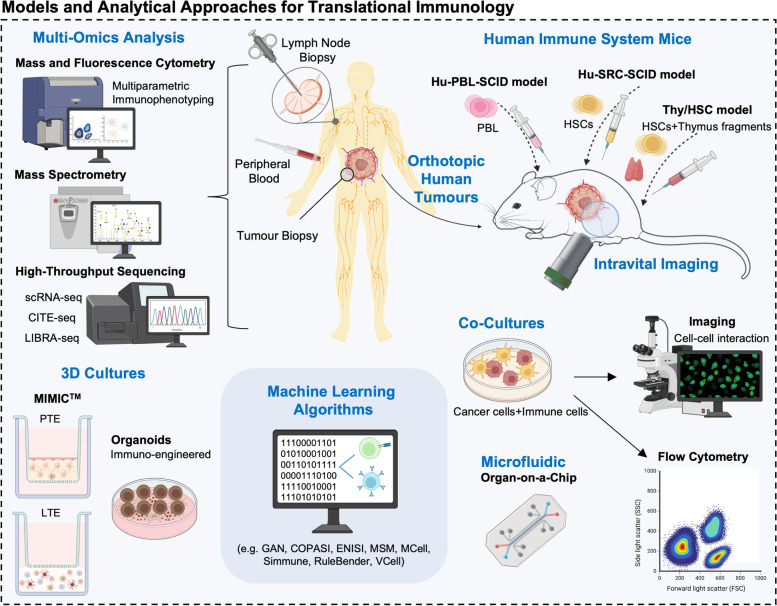Fig. 4.
Emerging models for translational immunology. Humanized murine models have been a step forward in mimicking human immune traits. Some of the more broadly used humanized models include the Hu-PBL (peripheral blood leukocyte)-SCID model, SRC (SCID repopulating cell)-Hu model, and the Thy/HSC model. In these examples, immunodeficient mice can be engrafted with functional human cells and tissues, including orthotopic human tumours and human hematopoietic stem cells (HSC) that develop into functional human immune systems. Mass and fluorescence cytometry of peripheral blood samples have been key technologies explored for multiparametric human immunophenotyping in oncology settings, revealing interindividual variations and tissue specialization of immune subsets. In parallel, high-throughput sequencing has enabled the unlocking of the extraordinary heterogeneity of the immune repertoire from a single sample of blood or tissues. In this context, sophisticated machine learning algorithms are being used to integrate large sequencing datasets. Regarding in vitro models of the human immune system, some challenging approaches have been proposed, including human modular immune in vitro constructs (MIMIC™) and organoid-like cultures. The MIMIC system technology is a 3D structure composed by a peripheral tissue equivalent (PTE) and a lymphoid tissue equivalent (LTE), allowing multivariate studies. Immuno-engineered organoids have also been used as an alternative to overcome the limitations associated with animal models, 2D systems, and previously existing 3D models

